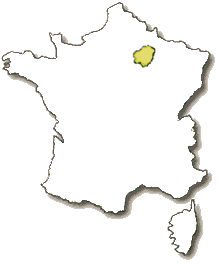Tasting
Champagne
About
Champagne :
A
Champagne bottle should mature in a cellar for one to
two years.
Vintage
bottles - the ones wearing a vintage year on their
label - can mature longer. Champagne winemakers use
to mature them from 3 to 8 years.
It
is not recommended to leave in a refrigerator for more
than 3 days a bottle already opened, even with a teaspoon
inside.
The best vintage years are 1990, 1989,
1985 and specially 1982.
There are several different kinds of
Champagne according to your taste:
- Doux (means sweet), 4% and more
of sugar
- Demi-sec (fairly sweet), 2.5 to 5% of sugar
- Sec (sweet/dry), 1.75 to 2.5% of sugar
- Extra sec (medium dry), 1.5 to 2% of sugar
- Brut (dry), 0.5 to 1.5% of sugar, the most common
Champagne these days
- Extra brut (very dry), 0 to 0.5% of sugar
Tasting Champagne :
Champagne is traditionally served in
a typical glass called flute or in a tulip: a long stem
with a tall glass. This kind of glass prevents the aromas
to unfold. The height of the glass is necessary for the
bubbles to rise to the surface and keep a constant temperature.
It is not recommended to pour Champagne
to the top of the glasses but only up to 2/3 of the glass.
Champagne is always served cold and chilled.
But not too cold, otherwise the wine is not able to release
its aromas.
A non-vintage Champagne should be drunk
at 8 °C (46 °F). A vintage Champagne at 10 °C
(50 °F).
Read
more about Champagne with Amazon.com :
-
World Encyclopedia of Champagne by
Tom Stevenson
About
Champagne :
Champagne
Wine Map - Champagne
information - Champagne
region - Champagne
wine history - Wine
making in Champagne - Wine
classification - Champagne
and food - Tasting
Champagne - Buy Champagne - Champagne
main page
French
Wine Regions :
Alsace - Bordeaux - Burgundy - Corsica - Côtes
du Rhône - Languedoc-Roussillon - Loire
Valley - Provence - South
West
|



